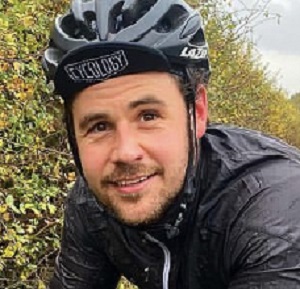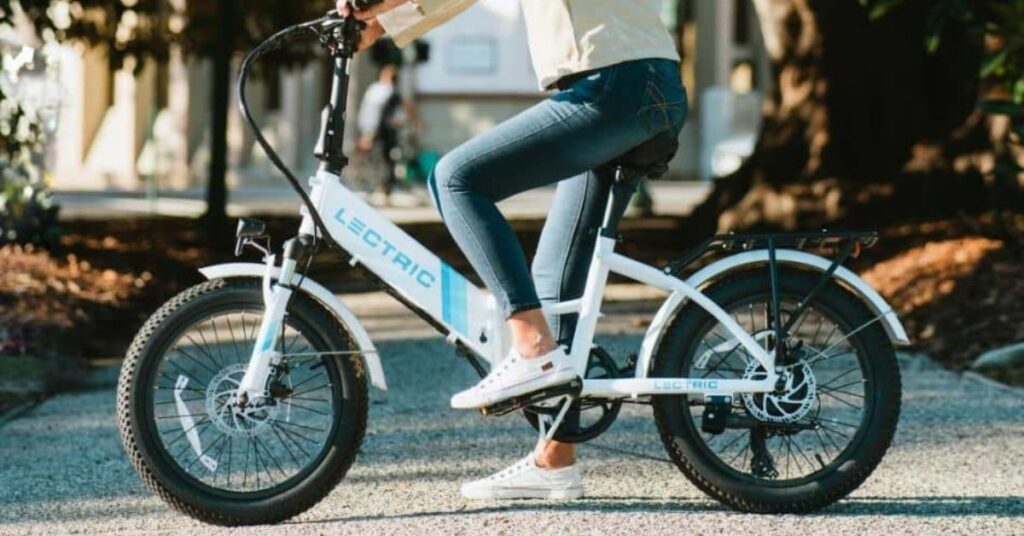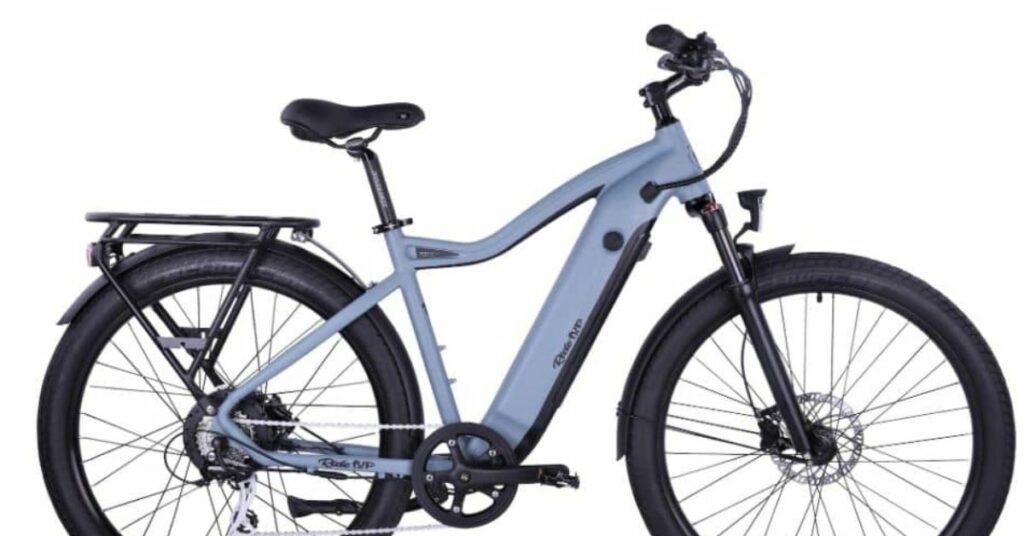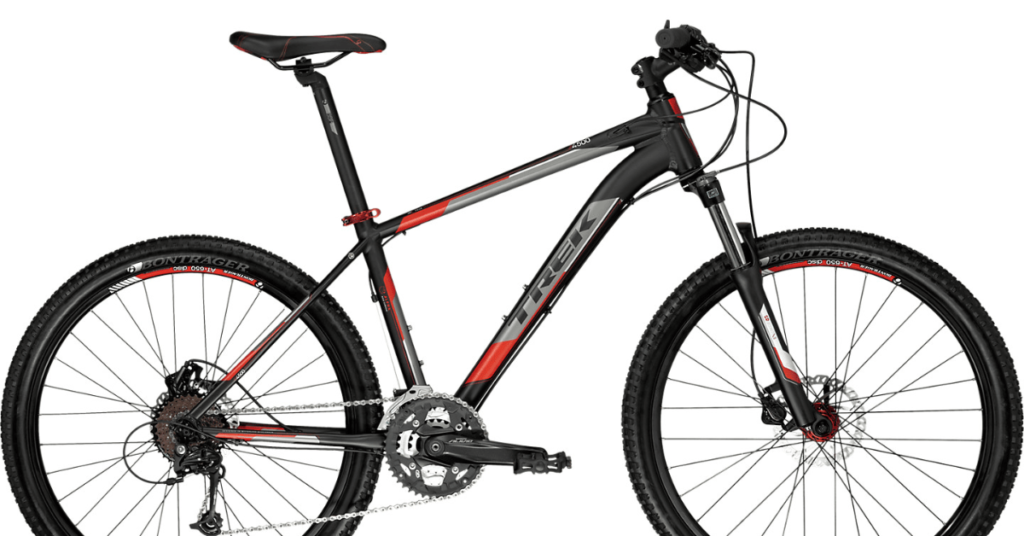(Last updated on April 12th, 2023)
Cycling is an amazing sport. There’s nothing like riding with the wind in your hair, the flowing endorphins, and the feeling of doing it off your pedal power. There’s a reason why bikes have become incredibly popular and why the industry continues to grow at a rapid rate.
Many people don’t know that cycling is an incredible way to get fit and one of the best forms of cardiovascular exercise. When it comes to cycling, you use a lot of muscles and way more than you might think.

In this article, I am going to discuss the following:
- Why Is It Good To Know What Muscles You Use When Cycling?
- The Different Types Of Muscles Fibers
- The Muscles You Use When Cycling
- The Way The Muscles Engage In The Pedal Stroke
- Top Tips To Optimize Your Pedal Stroke
Why is it Good to Know What Muscles You Use When Cycling?
Understanding the muscles you use when cycling comes with a huge amount of benefits. They say knowledge is power, and it’s exactly that in this case. Here’s why it’s good to learn:
To Improve and Help the Technique
By knowing the muscles, you use that knowledge to help you use them properly. You can optimize your pedal stroke for perfection when you understand your use of the muscles and how they engage alongside each other.
To Train Them Properly
If you know the muscles you use when cycling, you can target them when training. Many professional cyclists get to the gym and train muscles individually to get an edge over their competition.
To Avoid Injury
If you understand your muscles more, it can help you avoid injuries. So when things start to hurt on those longer rides, you can pinpoint that muscle and adapt how you pedal to avoid using it too much or too little.
To Help Rehabilitation
When it comes to rehabilitation, knowing what muscles you need to work on makes it easy to find the correct exercises. It can save you lots of time researching and ensures you can return to the bike as soon as possible.

The Different Types of Muscles Fibers
Before I start speaking about the muscles you use when cycling, it’s important to understand the different types of muscle fibers that you have in the body. These generally can be trained, and you will see certain athletes focus on certain types to give themselves an edge over their competition. Here’s what you need to know:
Type 1: Slow-Twitch Muscle Fibers
Type 1 muscle fibers are called slow twitch and are typically used by endurance athletes. They have the aerobic capacity and can use oxygen to produce energy for the body. You will see these in long-distance runners and cyclists. They typically don’t use much energy and are much less fatiguing while exercising.
Type 2A: Fast-Twitch Muscle Fibers
Fast twitch muscle fibers are known as type 2a. They are much better for quicker movements and producing fast power. They can produce explosive energy, and these are perfect for intensive efforts of 1 to 5 minutes. This is perfect for short-distance runners and cyclists in short-distance races. They use energy quickly and fatigue you fairly fast.
Type 2B: Fast-Twitch Muscle Fibers
Type 2b muscle fibers are fast twitch muscles but work much faster than type 2a. These give the most explosive energy you can get. Ideal for athletes like powerlifters or sprinters. These muscle fibers are very fatiguing and use a lot of energy.
Which Muscle Types Do You Have?
Generally, we all have a mix of all different muscle fibers. Typically you can change your muscle fibers, and you do this by training in certain ways. For example, a sprinting cyclist would train by doing lots of short bursts to switch the muscle to more type 2a and b than type one.

The Muscles You Use When Cycling
Now for the fun bit, learn about all the muscles you use when cycling. The best way to explain this is to break the muscles into groups, making it easier to understand. Here are the muscles:
Quadriceps
- Vastus Medialis
- Rectus Femoris
- Vastus Lateralis
The Quadriceps, commonly known as the quads, are the biggest groups of muscle when it comes to cycling. These are the muscles on the front of your legs. Generally, cyclists, over time, become very quad-dominant as this is a big part of the power when you perform a pedal stroke.
This group comprises the Vastus Medialis, Rectus Femoris, and Vastus Lateralis. These are a big set of muscles that do a lot of the driving power down the pedal stroke. These are a major part of seated and standing climbing and are very easy to train to improve strength and ability.
An Exercise to Train the Quadriceps
One of the best exercises to train the quadriceps is by doing squats. This is where you stand up straight, then lower yourself by bending your knees but keeping your back straight. Go to a point where your legs have a 90-degree angle, and if you can go lower while keeping that back straight, do so. Here’s a video of a squat.
Glutes
- Gluteus Maximus
The Gluteus Maximus, also known as the glutes, is the biggest muscle you have in your body. It sits on the rear of your legs at the top where your bum is. This drives a lot of power into the pedals and controls most downforce through your legs.
It’s made up of just the Gluteus Maximus, which plays a big role in not just powering your pedal stroke but keeping your back supported and is one of the main drivers in a standing climb.
An Exercise to Train the Glutes
A fantastic exercise to train the glutes is a glute bridge. This exercise is performed when laying on your back with your knees up to your bum and lifting yourself off the ground with your back staying nice and straight. You can do this with both legs or a single leg as you get stronger and stronger. Here’s a video of a glute bridge.
Hamstrings
- Biceps Femoris
- Semimembranosus
The hamstrings are a group of muscles that sit on the back of the legs at the top where the thigh is. It’s made up of the Biceps Femoris, not to be confused with arm biceps. Then you also have the Semimembranosus alongside that. They focus on the later end of the pedal stroke and are the driving force after the quadriceps have done their job.
Generally, cyclists tend to neglect their hamstrings, and over time they can get tighter and tighter, so it’s important to ensure they are worked on and can produce the best power possible for your body when cycling.
An Exercise to Train the Hamstrings
A great exercise to activate the hamstrings and also the glutes is to do a deadlift. This is where you take a barbell in front of you while slightly bending your knees and keeping your back straight, lean forward, then at the lowest position, take a short hold, and return back to standing straight. Here’s an example of a deadlift.
Calves
- Soleus
- Gastrocnemius Medialis
- Gastrocnemius Lateralis
The calves may be a much smaller group of muscles than the quadriceps and the hamstrings, but they are still vital to the pedal stroke and help keep the feet planted on the pedal. The calves comprise the Soleus, Gastrocnemius Medialis, and Gastrocnemius Lateralis.
Runners heavily use the calves and can greatly aid the bigger muscles in cycling. You can greatly benefit from strong calves, which can also help prevent injury to the smaller muscles.
An Exercise to Train the Calves
Doing calf raises is a great way to strengthen and stretch your calves. By stepping on the edge of a step or raised area, you can keep the front on the foot level and drop and heighten the rear engaging the calve muscles. Here’s an example of a calf raise.
Tibialis Interior
I also have to give an honorable mention to the Tibialis Interior. This is a small muscle that sits on the front of the shin. It’s only a small muscle, but it does play a big part in pulling the toes up to complete the pedal stroke.
Obviously, many other muscles are used in the body, such as the core muscles, arms, etc. In this article, I mainly spoke about the muscles in the legs.

The Way the Muscles Engage in the Pedal Stroke
What a lot of cyclists don’t understand is that the muscles engage at all different times throughout the pedal stroke. There’s a common saying in the cycling world that it takes years to grow cycling legs, and there’s an element of truth. You can have incredibly strong muscles, but they won’t produce speed if they haven’t got the natural timing.
I want to tell you when each muscle engages, so you know what works and when. The best way to do this is to imagine the pedal stroke as a clock. Now here’s when the muscles are going to be working:

Top Tips to Optimize your Pedal Stroke
I am are often asked how to optimize my pedal stroke for maximum efficiency. Surprisingly, it’s much easier than you might think, and there are many ways you can improve without actually having to do that much. Here are our top tips:
Bike Fit
One of the best ways to get the most out of your pedal stroke and muscles is to have a bike fit. A bike fit is the process of a professional setting you up properly on your bike so you are as efficient as possible. They look at factors such as saddle height, reach, and much more.
Strength Training
Getting some strength and conditioning done goes a long way to building up the strength in those muscles. It makes them more powerful and helps the mind-to-muscle connection, giving you a lot of power for very little time. It doesn’t mean you have to hit the gym. A lot of the exercises can be done at home.
Getting a Cycling Coach
A cycling coach is fantastic for giving you the right sessions to optimize your pedal stroke. If you want to build the right kind of much and make the right adaptations for a better pedal stroke, they can help you.
Conclusion
Now you know the muscles that work when you are cycling. It’s great knowledge to have and will go a long way to helping you understand it all and become a better cyclist. Now you are ready to hit your favorite city for a fast ride. I hope you enjoyed the article.
If you liked this article, you might also like the following:

Frequently Asked Questions
Regarding legs, yes, you typically use the same muscles on the legs. When mountain biking, you generally do more upper body than road and require more protection, such as tougher helmets. Mountain biking generally comes with more equipment for the upper body because of this.
The way to a toned stomach is more about diet and losing body fat through eating fewer calories than certain exercises. Cycling burns calories, so yes.
It’s very easy for cyclists to neglect their glutes and hamstrings and focus on the quads. Typically the glutes more than anything, though.
Cycling uses a lot of muscles and burns a lot of calories. It is natural for your body to feel very tired after. Everything can make a difference. Even larger tires will make you tired quicker.
Cycling daily is ok, but it’s good to include rest time. It depends on many things, such as what you’re training for and who you are. An hour a day is a good amount.

I’m Robbie Ferri, a writer from Norfolk in the UK. I love cycling, the gym, and have a huge passion for sharing my stories and knowledge to anyone with the time to read them. My main passion is cycling. I started eight years ago. In that time I have broken world records, cycled all over the world in Ultra Bikepacking races, and am lucky enough to have enjoyed some incredible times on two wheels with some incredible people. I have also worked in a bike shop and with some of the industries leading brands, not just promoting products but designing them too.
Under it all I am just someone very passionate about exploration and living a healthy lifestyle. Everything I do I put 100% into it and feel that life is for living. Never should you have a dull day.




